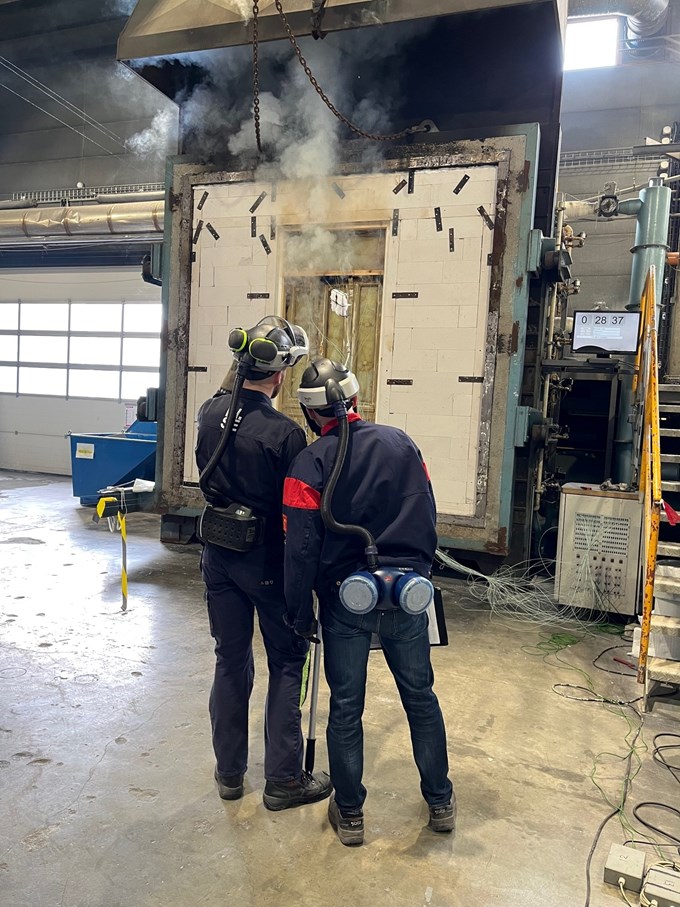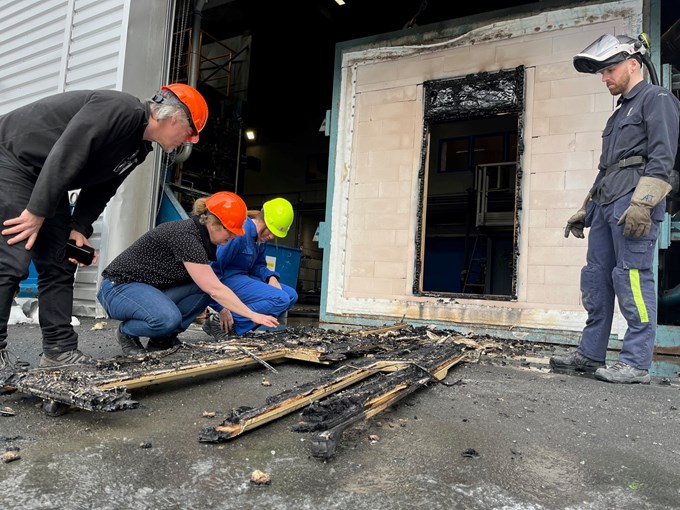Murbyen Oslo is a building conservation center which, among other things, works to preserve Oslo's apartment buildings in plastered brick from the latter half of the 19th century until around 1930.
Many of the original wooden gates and doors in the typical 1890s apartment buildings in Oslo were often beautifully decorated with carvings and other details to signal wealth and good taste. They were handmade, and most often with materials and surface treatment of good quality, which is why such doors and gates are very durable.
In Oslo alone, there are tens of thousands of such doors and gates in the plastered brick apartment buildings. Murbyen Oslo, the Norwegian Directorate of cultural heritage (Riksantikvaren), and many the recidents, want to preserve the doors, while at the same time ensuring fire safety in the homes.
The 30 Minutes Threshold
In an older building, the entry between different fire cells, such as housing units, corridors or stairwells, can have a major impact on how quickly a fire spreads. Doors and gates must therefore have sufficient fire resistance.
But is it possible to upgrade wooden doors from the end of the 19th century so that they have enough fire resistance to prevent fire spread between two fire cells for at least 30 minutes? In order to find out, an upgraded door was recently tested here at RISE Fire Research.

A Relevant Alternative
“The test was successful! The integrity lasted for 30 minutes, and as far as the insulation is concerned, there was only one temperature point that exceeded the criterion of 180 degree Celcius rise after 30 minutes”, says Caroline Lundegaard Hannisdal, general manager of Murbyen Oslo.
She and the project partners hope this test, together with other tests and professional recommendations, will make it easier to document that upgrading is a relevant alternative to replacing doors with considerable cultural heritage value.
the Norwegian Directorate of cultural heritage finances the project, which is owned by Murbyen Oslo. The project group also includes Oslo City Municipality and the Norwegian Institute for Cultural Heritage Research.
How the Door Was Upgraded
The cultural heritage door that was tested was upgraded with (EI 30) fire glass which was attached to the door within the existing glass. Outer oak panels were also added, as well as sealing strips to prevent smoke leakage. No fire protective surface treatment of any kind was used in this test.
Financial Support for Conservation
Caroline Lundegaard Hannisdal explains;
“The test shows that it is possible to both preserve and upgrade the historical doors. We hope that this may influence property owners to choose conservation rather than replacement of their cultural heritage doors. It is also worth noting that the owners can apply for grants this from the Oslo City Municipality.”
If you want to know more about fire resistance tests, contact project manager at RISE Fire Research Mikael Bergius on mobile (+47) 40 60 19 49, or email: mikael.bergius@risefr.no
